Source: Head AI Player
"Guys! I finally unlocked the endless mode! It's so difficult…"
After three months, the Douyin blogger "Sanke You" finally completed a tower defense game called "Cell Defense Line," and the video collection of his game commentary has accumulated 3.44 million views. On Xiaohongshu, bloggers such as "Ou Huang Yu Ge" and "Game Master" also released game commentary videos of the same game, with the highest number of likes on a single video reaching nearly 3,000.
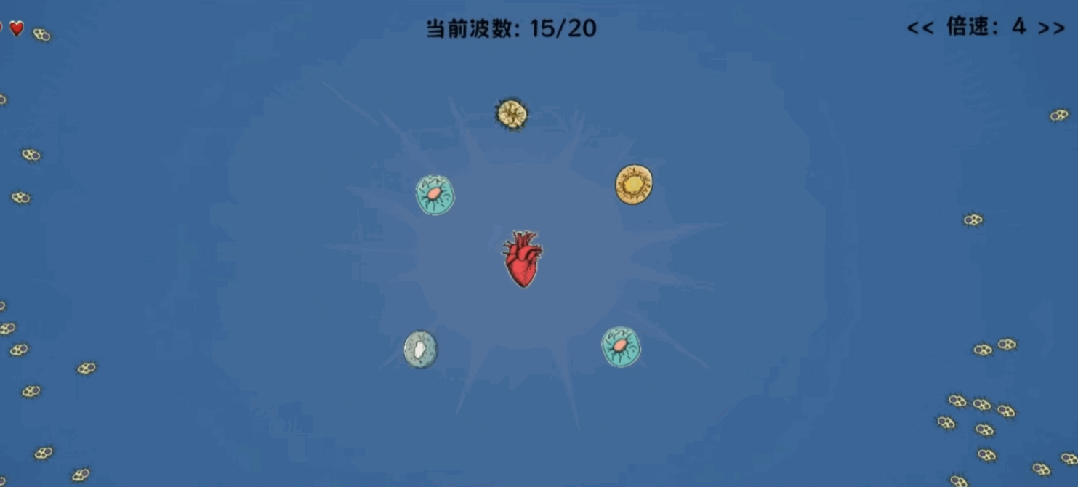
Although "Cell Defense Line" has captivated many players, surprisingly, this small game was almost entirely created by generative AI, including the game's code, graphics, and gameplay settings. According to the independent game producer "Hard to Leave," it took a total of 60 hours to create this game.
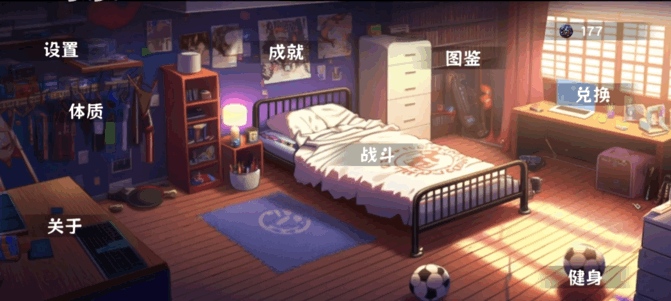
The game scenes and controls of "Cell Defense Line" are relatively simple.
With the explosive development of AI technology, "AI+ games" is not limited to AI-assisted character generation, but also includes art design, game plot, character voice-overs, and more. For example, using AI to draw characters in the game and utilizing an AI corpus to generate voice effects in the game.
How can an individual complete the entire game production process? What are the chances for small and medium-sized teams to create a hit game? What opportunities does the future hold for "AI+ games"? We had a conversation with "Hard to Leave" to discuss the potential for ordinary people to use AI to create games.
How can ordinary people use AI to assist in game development
For independent game producers, the role of AI is greater than imagined.
"Hard to Leave" is an amateur independent game producer who, swept up in the wave of AI, began to experiment with using AI to assist in game development. In April of this year, he released the tower defense game "Cell Defense Line" on the game community TapTap.
"Hard to Leave" stated that AI technology is involved in game logic, programming, and art. The game code is mainly generated by ChatGPT, and the game art uses the AI drawing tool Midjourney, ultimately creating the entire game using the Unity game engine.
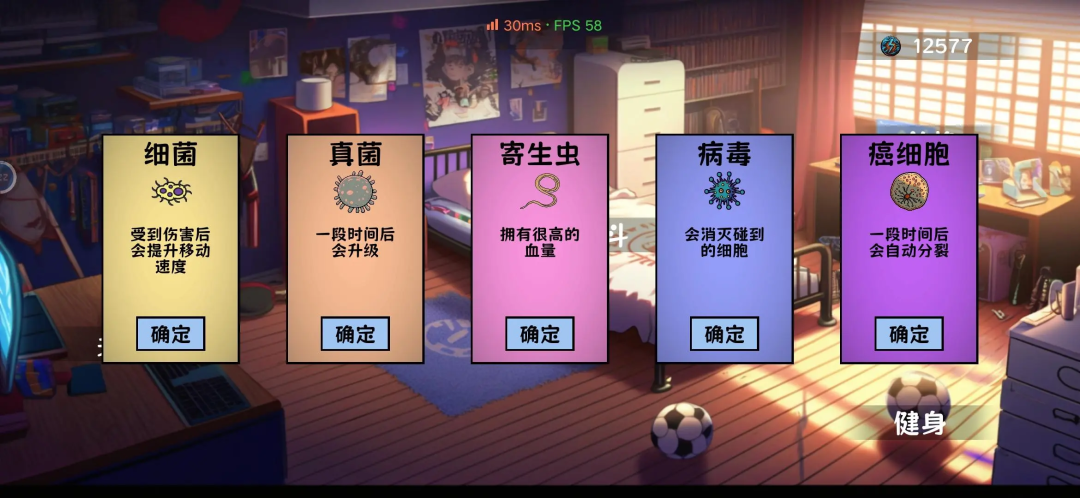
The gameplay of "Cell Defense Line" is relatively simple. Players need to deploy various immune cells to defend the heart, which has only three life points, against various invading pathogens.
"Hard to Leave" mentioned that he first had ChatGPT provide the basic game code and then continuously optimized and iterated on various game functions based on this foundation, improving the logic of the game design, such as allowing pathogens to automatically attack the heart and upgrading the heart's defense level. This was gradually completed.
"During the design process, AI usually provides two options. I let it analyze the pros and cons of certain decisions in detail, such as whether a fixed mode for defense towers is better or if a mobile state has more advantages, and then make improvements based on my own needs."
The emergence of large models like ChatGPT can provide significant support and assistance to independent game producers and even small teams. Prior to this, "Hard to Leave" had attempted to create a prototype of a tower defense game, but due to his limited coding abilities, he was unable to produce a tower defense game logic that could be truly applied.
However, with the assistance of ChatGPT, the core logic generation of "Cell Defense Line" only took 3 hours, in addition to the 30 hours spent on creating the game graphics using Midjourney, and the subsequent code details debugging and adaptation, totaling about 60 hours.
He also mentioned that the image detail of Midjourney cannot compare to professional art design, but it helped him to a certain extent in overcoming the difficulties of game art creation, "After using Midjourney, I no longer have to worry about the lack of artistic resources for independent developers."
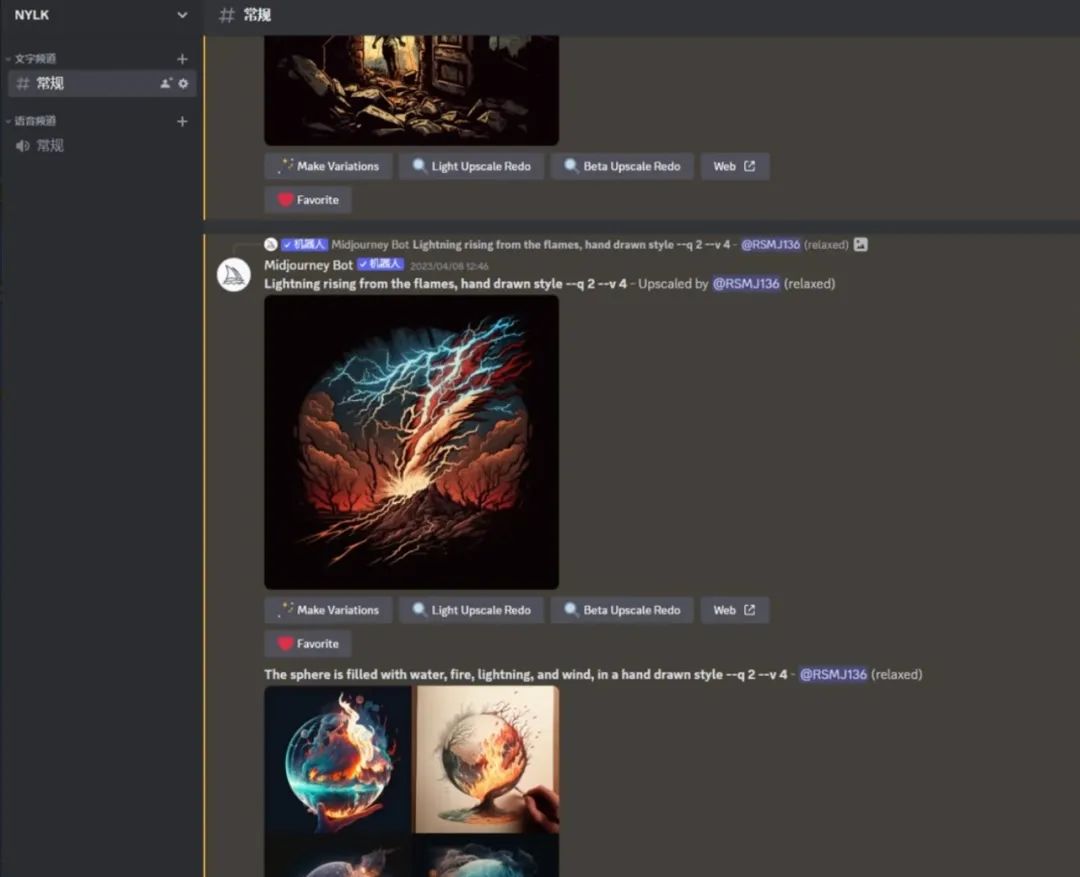
Initial concept art of "Cell Defense Line"
Within three days of its release on TapTap's game community, "Cell Defense Line" surpassed 10,000 downloads and reached fourth place on TapTap's new product rankings. As of now, the game has attracted over 40,000 users and received hundreds of comments.
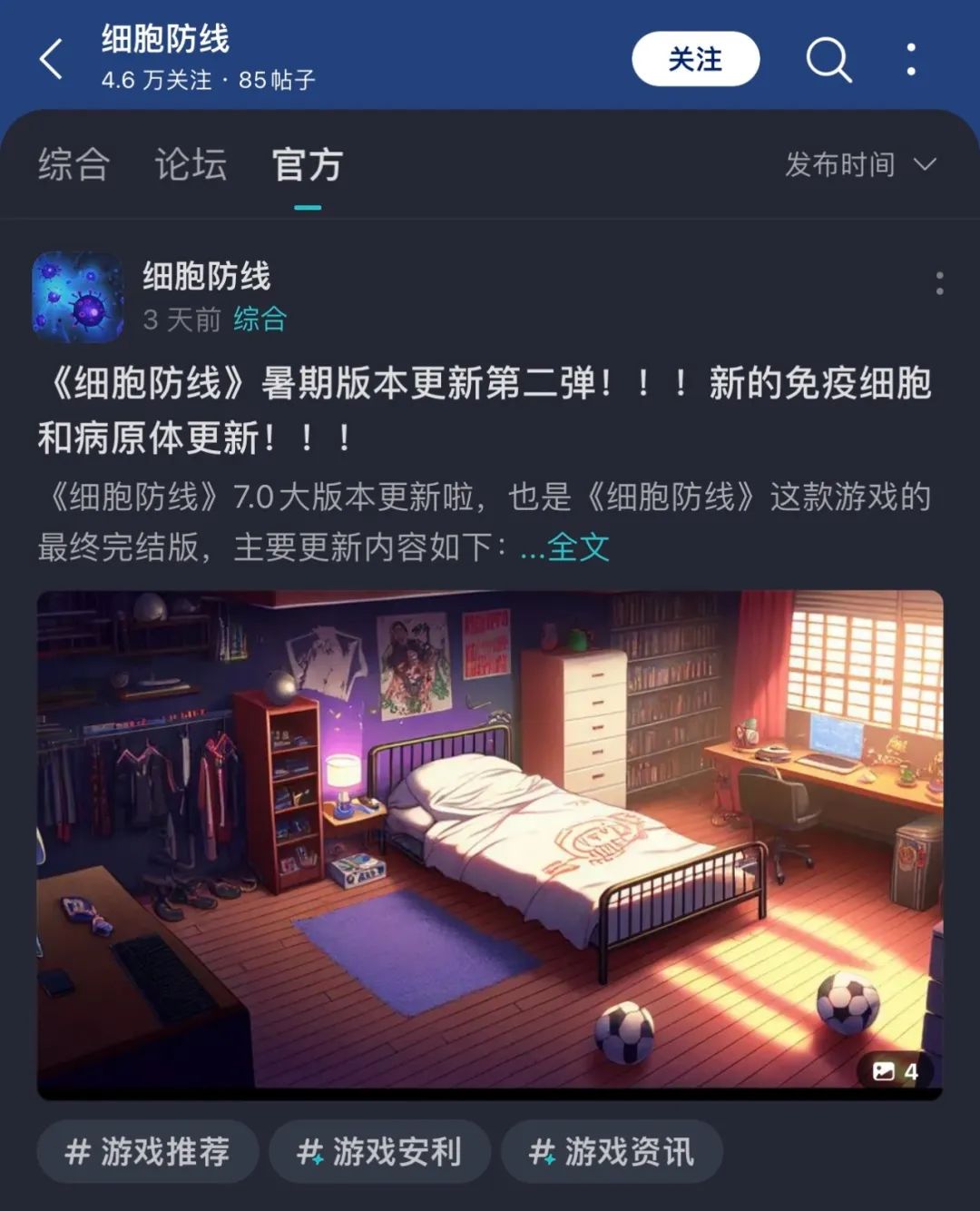
In the TapTap discussion area, some players believe that "if the author didn't mention it, you couldn't tell at a glance that this game was created with AI assistance." The game's playability and level logic, compared to earlier games such as Pac-Man and Breakout, which were also generated using AI, have made significant leaps.
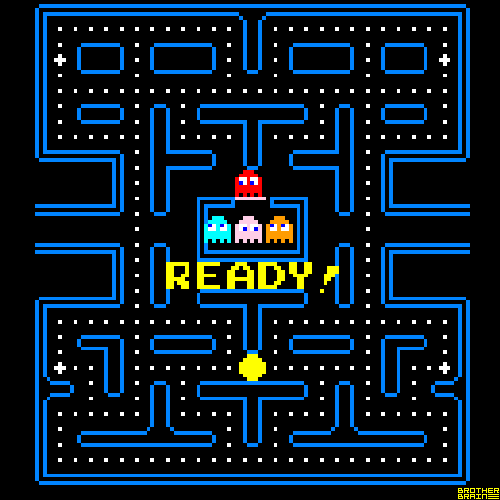
The originator of game AI—Pac-Man
After being released on TapTap, "Cell Defense Line" also included ad placements, such as allowing players to accelerate the unlocking of in-game items by watching ads during the game, driving the game's progress, which also brought commercial revenue to "Hard to Leave."
According to him, "Cell Defense Line" mainly utilized the third-party platform GroMore to access ads for commercial monetization. Currently, the game has accumulated revenue of around 10,000 yuan, with stable daily ad revenue of around 100 yuan.
The successful monetization of "Cell Defense Line" provides a reference template for the commercialization of "AI+ games" and the popularization of game production.
Before this, there were creators who used AI to create games. For example, the UP master "Da Gu's Game Creation Hut" used ChatGPT to create an interactive game called "Sickly AI Catgirl Girlfriend," and the game's braininess and playability once caused a craze of reviews and derivative works on Bilibili.
On July 30, Bilibili game area UP master "Hua Shao Bei" with 6.51 million fans released a trial play video with the theme "Curing the Sickly," with a playback volume of 2.1 million and the highest heat reaching sixth place on Bilibili. Game area UP masters "Chinese BOY Super Gorilla" and "Mou Huan Jun" also tried this game, with playback volumes reaching 2.148 million and 3.35 million, respectively.
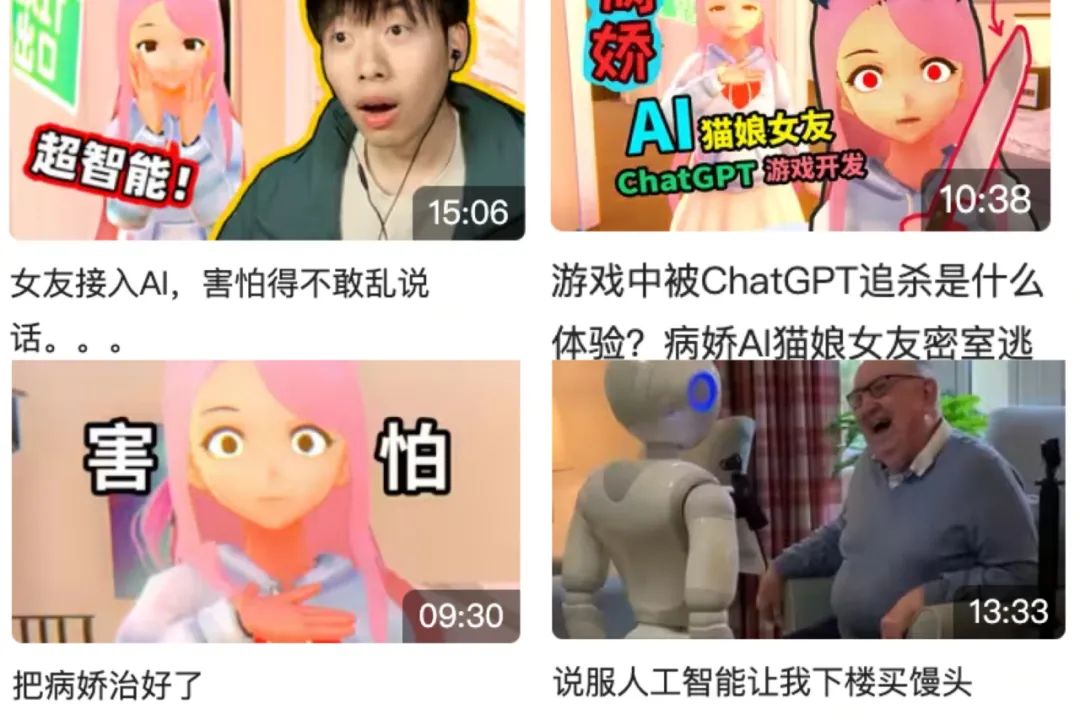
It can be seen that independent game producers using AI for game-assisted development can also create high-quality NPCs and highly playable interactive experiences.
According to observations by Head AI Player, the application of AI in the game field mainly revolves around character images, scene illustrations, and other drawing production categories, with a small number of producers integrating AI voices and AI scripts into game production. For independent producers, combining basic AI tools can greatly reduce the production threshold and unleash productivity.
Game companies exploring the potential of "AI+ games"
As independent game producers, "Hard to Leave" and "Da Gu's Game Creation Hut" have relevant coding and programming experience, enabling them to use AI to assist in developing small and beautiful casual games. However, for resource-intensive, long-cycle, and high-precision 3A games, it is not something that a single independent producer can accomplish.
In this context, major game companies have also begun to consider using AI to lay out games, hoping to further explore the potential of "AI+ games," such as attempting to introduce AI into games to eliminate the process of developers laying out code and original design, and some game companies not only use AI to complete simple auxiliary code development but also use AI to generate game worlds and experiences through text.
Recently, the Finnish startup company Roleverse released its adventure game platform "Roleverse." It allows users to generate game worlds using AI, which can be understood as another version of "Minecraft" with AI. According to the official demonstration video, players first enter a "blank" game world, and then the game AI will ask the player what kind of gameplay and experience they want, and then customize it based on the player's input.
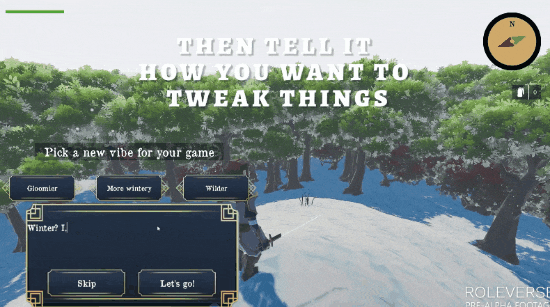
Screenshot of the "Roleverse" demo
Although "Roleverse" gives some autonomy to players for custom design, the entire game still takes place within an existing framework, and the player's customization choices are limited.
Even so, "Roleverse" has taken the first step in AI-generated game worlds. The CEO of Roleverse stated in the official announcement, "AI is more of a tool to unlock creativity, and we hope to provide users with instantly playable games for them to enjoy the game itself."
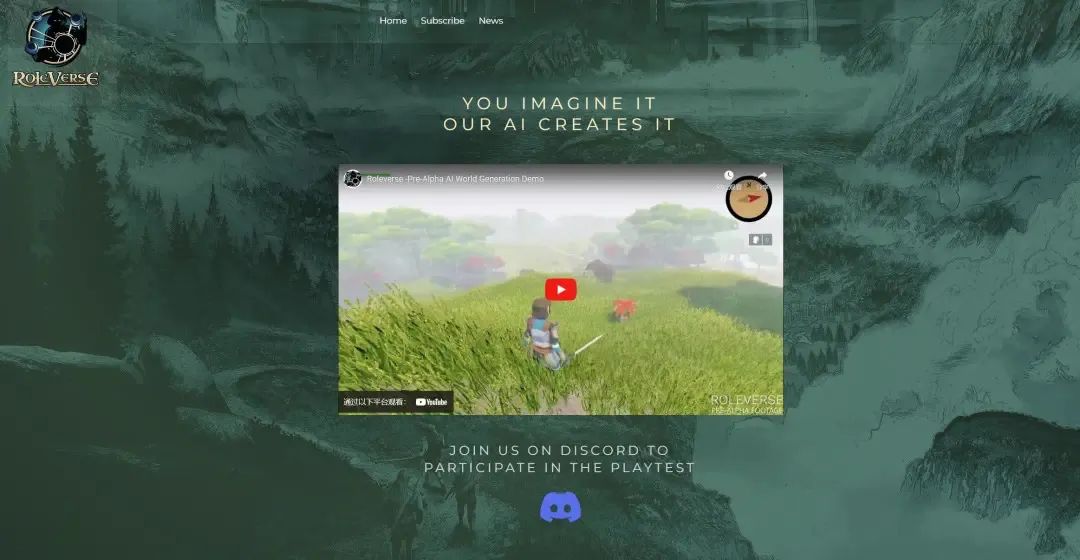
In addition to Roleverse, other game companies have also begun to focus on creating games using AI.
The technology company Moonlander used updated large language models (LLM), machine learning algorithms, and generative diffusion models to simplify the game development process and released the AI-based game sandbox platform "Moonlander.AI." Moonlander stated on its official website that anyone can develop their favorite 3D game based on text descriptions, breaking down the technical barriers of game development with a real-time, easily accessible development process.
If "Roleverse" simply uses text to generate game worlds, then "Moonlander.AI" makes "creating a 3D game with a single sentence" possible. Even if players do not know any game art, code programming, or planning, they can design game environments, gameplay, animations, and other content, easily obtaining a 3D game.
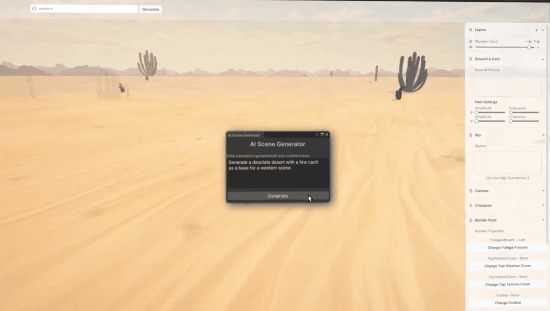
The operating interface and related functions in the Moonlander demo version.
"Moonlander.AI" integrates popular AI tools, game engines, analysis tools, and efficiency tools at the technical level, allowing developers to focus their energy and time on gameplay rather than just game code deployment.
Currently, "Moonlander.AI" is still in the public testing phase, and it demonstrates the potential of AI game creation, significantly lowering the threshold for non-professionals to attempt creating AI games and providing them with more possibilities for game creation. Even small and medium-sized teams without a large budget can create a high-fidelity 3D game.

Driving AI with code is not foolproof
AI, from a supporting role in game creation, is gradually evolving into the protagonist of game world generation. Will "everyone can be a game producer" become a possibility in the future?
Although developing a mature AI casual game only took 60 hours, compared to traditional game development, there has been a significant improvement in efficiency. However, the inevitable issue with using AI for game development is "training." Just like most users using AI tools to generate images, if the keyword code (Prompt) is used improperly, the results may not be satisfactory.
The higher the requirements for game settings, the more difficult it is to train AI.
"Hard to Leave" stated, "For some specific scenarios or complex logic, it's difficult to use ChatGPT to generate everything in one step. ChatGPT plays more of a supporting role, doing some algorithm optimization. Sometimes ChatGPT doesn't provide suitable code that can run in Unity, so I need to continue asking if there's a problem with the code, which consumes a lot of time. So for modules with relatively simple code, I will just write it myself."
Most game developers mention that the biggest feeling after using AI for game development is that AI greatly optimizes the game production process. However, as "Hard to Leave" mentioned, the current use of AI by independent game producers is still in the exploratory stage, and AI has only liberated the productivity of one or more game development modules.
Developer Nick, who works on AI game native engines, also mentioned in a podcast interview, "AI can currently optimize the process. We hope that AI can simultaneously consider the credibility of the content and the rules of the game parameters, which is very difficult to achieve at the current stage."
Searching for "AI games" on Bilibili, you can see a group of UP masters trying to create game demos using AI tools such as Midjourney, ChatGPT, and Stable Diffusion. However, most products are not yet mature, and the game content is limited to role-playing and card games with low technical barriers.
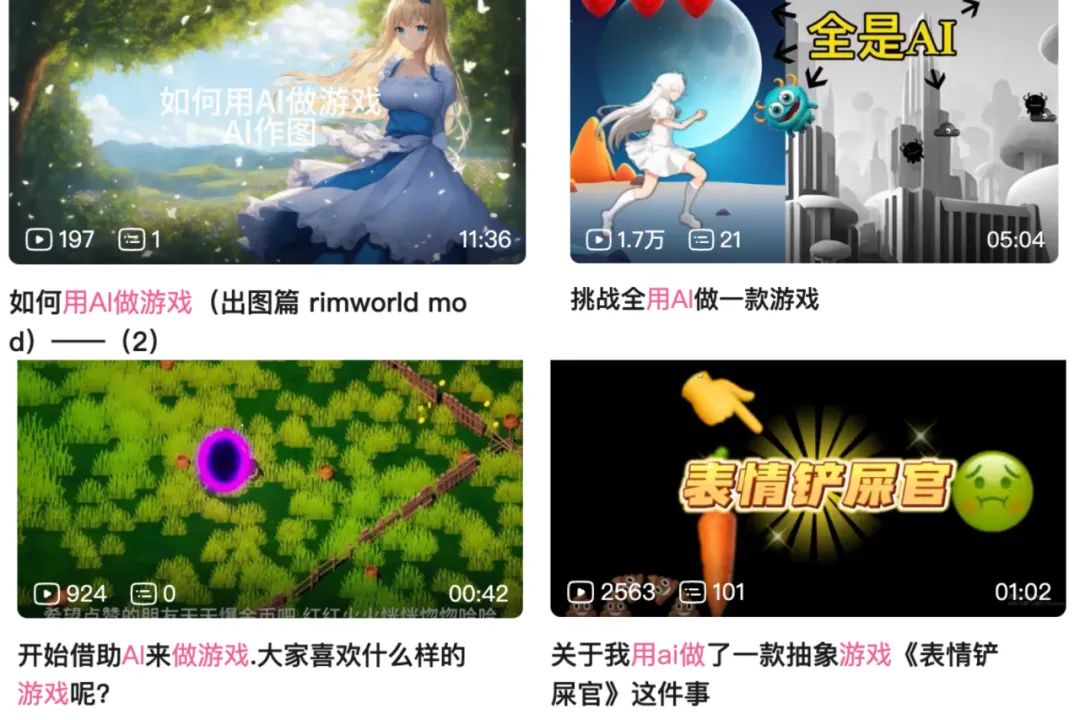
Currently, AI tools cannot allow non-technical non-professionals to freely generate games, and using AI for game creation by small and medium-sized teams is only as an auxiliary creative tool.
"Hard to Leave" stated that with AI, everyone can be a game developer, but not necessarily a producer. "Ordinary people can use AI to complete their own game designs, but from production to release, they need to have abilities in aesthetics, communication, marketing, and operations to make the game successfully go live. And most importantly, it needs to be recognized by players after release."
Currently, AI game creation has not truly entered the stage of pure AI output; it is more a coupling of human and AI.
On July 28, 2023, at the ChinaJoy AIGC conference, Tao Ran, General Manager of the Azure Business Unit at Microsoft Greater China, stated, "Using AI to accelerate creation, rather than being replaced by AI in creation, is crucial and a basic principle. AI will never replace human development and creation; game creation is a creative behavior led by humans."
AI provides more development space for small and medium-sized teams and independent game developers, making game content production more convenient and cost-effective. Their reliance on capital is also continuously decreasing.
"When it comes to the value of games, it mainly lies in game content. More people can use AI to generate their own ideas, allowing more good designs to be oriented towards players and the market. I think this is a good thing," said "Hard to Leave" when discussing the possibilities that AI brings to ordinary people.
AI is rapidly changing the ecosystem of game creation, and perhaps one day in the future, everyone's imagination will be a brand new way to play games.
免责声明:本文章仅代表作者个人观点,不代表本平台的立场和观点。本文章仅供信息分享,不构成对任何人的任何投资建议。用户与作者之间的任何争议,与本平台无关。如网页中刊载的文章或图片涉及侵权,请提供相关的权利证明和身份证明发送邮件到support@aicoin.com,本平台相关工作人员将会进行核查。




